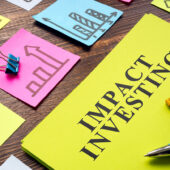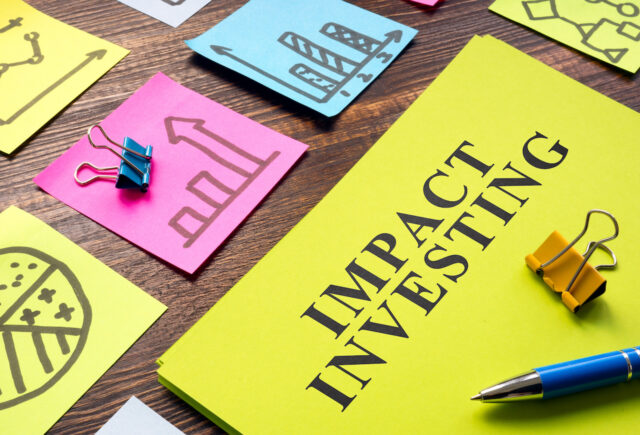EU plans to introduce a social taxonomy have been put on hold until at least the end of this parliamentary term, with lack of political will and absence of international standards to measure social impact cited as main stumbling blocks

In brief
- Little political will to push ahead with social taxonomy within this EU parliamentary term
- Lack of common definitions of social investment and limited data are major hurdles
- Call for rethink on investor priorities in social sector
Producing an EU taxonomy to classify investments in social projects and enterprises has proved so challenging that the project has effectively been put on hold, at least until the European Commission’s (EC’s) current term of office ends in 2024. But there’s still plenty that can be done to promote social investment.
The social taxonomy is designed to be a spur to social investment in a way similar to that in which the EU’s sustainable finance taxonomy, now under development, is intended to allow investors to judge the environmental and sustainability credentials of financial products offered by financial institutions.
Both taxonomies are supposed to provide an easy way for potential investors to assess funds and other financial products on the basis of the environmental, social and governance (ESG) and sustainability credentials of companies and other assets in which they are investing.
Developing the sustainable finance taxonomy has been far from smooth as politicians and interest groups lobby for changes in a classification system yet to be set in stone. That has left fund managers, who already need to provide data relating to the classification, confused about what investments fall in which category of the taxonomy.
But at least the sustainable finance taxonomy is being implemented. For the social taxonomy, even making progress on the basics of a blueprint is proving difficult, as stakeholders struggle to agree on definitions of social investments and how they should be measured.
An EC report providing a template for the social taxonomy was due in 2021, but has yet to be published. An EU advisory body, the Platform on Sustainable Finance (PSF), did release some proposals for the social taxonomy in a report published February 2022, covering topics such as decent jobs, improved living standards, better healthcare, and creating more inclusive and sustainable communities. But there seems little interest at EC level in pushing for faster progress on such a complex project.
‘Lack of will’

Bianca Polidoro, senior policy and EU partnerships manager at the European Venture Philanthropy Association (EVPA) – and a member of the EC’s Expert Group on Social Economy and Social Enterprises – said there seemed to be a lack of will within the EC to push ahead with the creation of a classification system.
“We need more coordination between the different Directorate Generals at the European Commission level to move forward with a social taxonomy,” she told Impact Investor.
One of the main stumbling blocks to progress is that, while environmental objectives and criteria can be based on science, such as measuring carbon emissions reductions, a social taxonomy would be based on agreed international standards and difficult-to-quantify measures of progress. In short, it’s harder to measure social impact than environmental impact, and hard to get politicians in EU countries to agree on which social measures should be prioritised.
However, organisations operating in the sector say they are making advances towards more feasible data-based assessment.
“Even though the market is still in an early stage when it comes to data availability, we are currently working to address this gap. We have been collecting data on impact investing to improve impact and build awareness about the field for investors and EU policymakers,” Polidoro said.
But, she added, the way the social taxonomy is framed, as a support tool for investors concerned about incorporating ESG into their investment decision-making, may slow down what it can achieve in terms of spurring social investment.
Investors seeking to address the social component of ESG tend to focus on one of its aspects – the idea of doing “no significant harm” through their investments. That passive position allows them to prioritise attractive financial returns, when they should be seeking to actively make long-term impact the main reason for their investments, according to Polidoro.
“If the objective is to achieve the UN SDGs by 2030, the focus needs to be on understanding these different investing strategies within the financial markets, the outcome of investments – instead of just outputs – and how these are being measured and managed. Achieving this will require not just political will, but a shift in our investing culture,” she said.
Existing legislation
If a social taxonomy looks unlikely to happen any time soon, there are other promising paths towards greater mobilisation of social investment at the EU level, which may make a greater impact on the sector.
Existing legislation, such as the EU’s Corporate Sustainability Reporting Directive (CSRD), a law that will improve data availability on companies’ sustainability information, together with tools developed by the impact investment industry over the years, provide a solid foundation, Polidoro said.
Meanwhile, the EU’s Social Economy Action Plan was launched in December 2021 with one of the main aims being to promote a more coordinated approach to currently patchy and varied financial support for the social economy across the bloc.
A report on the plan from the European Parliament’s Committee on Employment and Social Affairs was approved by the parliament in July 2022. That called for a common EU level definition of the social economy and a drive towards more gender and age diversity in the social economy, as well as improved access to finance.





